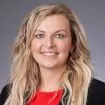The Province of Manitoba entered Phase Two of Restoring Safe Services on June 1, 2020. The occupancy limits of 50% of normal business levels or one person per 10 square metres has been lifted for regulated health professions, but service providers must continue to implement measures to ensure that members of the public are reasonably able to maintain a separation of at least two metres from others, except for brief exchanges.
Read our Manitoba to Enter Phase Two of the Restoring Safe Services Plan for further details. A more general overview respecting the multi-phased plan can be found in our Manitoba's Plan for Reopening Businesses blog post.
Non-regulated health professions (such as massage therapists) must continue to limit occupancy to 50% of normal business levels or one person per 10 square metres.
The requirements for therapeutic or health care businesses established in Phase One of Restoring Safe Services continue to apply, which includes:
- Practitioners should see patients by appointment only and keep logs of appointments for a minimum of 21 days, for potential contact tracing
- Pre-appointment screening by phone and screening upon patient arrival should be done using the most recent Manitoba Shared Health screening tool available here
- Individuals who have or are suspected to have COVID-19 should not be seen in the clinic
- Waiting room strategies for the clinic must be in place to limit the number of patients in the waiting room and the time that patients spend in the waiting room, which includes having the patients wait in a car or practising social distancing if waiting in the clinic
Dentists
- Under Phase Two of Restoring Safe Services, the Manitoba Dental Association is permitting Manitoba dentists to return to full provision of dental services
- The Manitoba Dental Association Pathway Document provides a
general guide to dentists in private practice, which includes (but
is not an exhaustive list):
- Screening - in addition to patient screening, daily screening for dentists and dental clinic staff is also recommended using the Manitoba Shared Health screening tool
- Guidance for Team Members - policies should be in place for dentists and dental staff, which includes adhering to hand and respiratory hygiene, maintaining physical distancing and wearing ASTM Level 1 masks when physical distancing among staff members is not feasible
- Guidance for Patient Flow - policies should be in place for managing the flow of patients, which includes minimizing the movement of patients within the clinic, maintaining physical distancing and staggering appointment times
- Personal Protective Equipment ("PPE") should be utilized by dentists and staff (only for patients who do not have and are not suspected of having COVID-19). The Pathway Document provides advice on the appropriate type of PPE depending on the nature of the procedure. Reference should also be made to the most recent policies on PPE released by Manitoba Shared Health.
- Resources - Manitoba Dental Association Pathway Document
Optometrists
- The Canadian Association of Optometrists released COVID-19
guidelines for optometrists, which includes (but is not an
exhaustive list):
- Putting protocols in place to maintain social distancing in the clinic
- Ensuring that staff wash down equipment frequently
- Having optometrists and staff wear PPE such as masks, when in close proximity to patients. Reference should also be made to the most recent policies on PPE released by Manitoba Shared Health
- The Canadian Association of Optometrists is also encouraging optometrists to consider offering some teleoptometry services to their patients where possible. Teleoptometry is defined as the provision of vision and eye health services that are delivered within the scope of the practice of optometry using electronic health information, medical and communication technologies, and where the provider and patient are separated by remote distance. However, there are several practical considerations that must be addressed prior to commencing teleoptometry, such as ensuring that appropriate insurance is in place that covers the particular risks associated with providing teleoptometry services
- Resources:
Physiotherapists
- The College of Physiotherapists of Manitoba previously released
guidelines for entering into Phase One of Restoring Safe Services
under CPM COVID-19 Bulletin #13, which included (but is not an
exhaustive list):
- Having a single point of entry into the clinic
- Posting external signs indicating COVID-19 physical distancing protocols, along with floor markings where service is provided or where lines form
- Work/service areas are sanitized after each patient
- The use of PPE when treating patients in accordance with the most current policies released by Manitoba Shared Health
- The College of Physiotherapists of Manitoba released its
guidelines for entering into Phase Two of Restoring Safe Services
under CPM COVID-19 Bulletin #16, which built upon the previous
guidelines that were released for Phase One of Restoring Safe
Services, which include (but is not an exhaustive list):
- The use of hand sanitizer is still required
- Physiotherapists must continue to use PPE, however cloth masks are not permitted. Physiotherapists should be wearing masks that are of surgical or procedural quality and eye protection which includes face shields, goggles or safety glasses
- If physiotherapists employ massage therapists or athletic therapists in their clinic, since they are not regulated health professionals, they must continue to abide by the 50% of normal business levels or one person per 10 square metres rule
- Resources:
If you have questions relating to your business's specific circumstances, please reach out to MLT Aikins for assistance.
The content of this article is intended to provide a general guide to the subject matter. Specialist advice should be sought about your specific circumstances.

